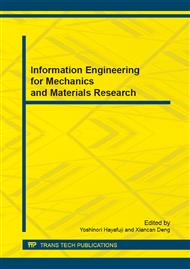p.159
p.165
p.172
p.176
p.181
p.185
p.191
p.196
p.204
Applied to Medical Monitoring of the Wireless Sensor Network Design and Research
Abstract:
Along with the computer technology and the rapid development of communication network, wireless network sensor will be exploring new medical mode, a breakthrough in the medical field, the main monitoring and measuring the human body physiological parameters, for the human body can be all kinds of condition monitoring, data transfer to all kinds of communication terminal. Without having to leave home, monitoring their own physical condition anytime, anywhere and the test results, in the form of network transmission will be updated to medical personnel information database, doctors and patients are more closely connected on a timely base and effective communication and treatment can be easily carried out.
Info:
Periodical:
Pages:
181-184
Citation:
Online since:
September 2013
Authors:
Price:
Сopyright:
© 2013 Trans Tech Publications Ltd. All Rights Reserved
Share:
Citation:


